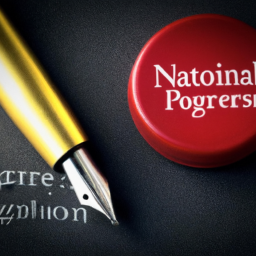From Non-Profit to For-Profit: The Fall of National Geographic Under Disney Ownership
The Changing Landscape of Journalism: National Geographic under Disney Ownership

In today’s digital age, the landscape of journalism has drastically changed. The rise of the Internet has made it accessible for everyone to obtain information for free, leading to a decline in the value placed on quality journalism. As a result, many news outlets struggle to maintain profitability, and the journalism profession itself is facing an uncertain future.
One example of this troubling trend is National Geographic, a once-prestigious publication that has struggled under the ownership of Walt Disney Co. Despite Disney’s immense yearly revenue of nearly $100 billion, it appears that National Geographic is being forced to close its doors. This decision is disheartening, as it is difficult to believe that a company of Disney’s magnitude cannot allocate a small portion of its earnings to support the journalism that National Geographic is known for.
National Geographic spokesperson Chris Albert claims that staffing changes will not affect the publication’s plans to continue producing a monthly magazine. However, the question remains: if they are laying off writers, who will be responsible for producing quality content? The concern raised by one commentator is that artificial intelligence (AI) may replace human writers in the future. In fact, AI content is already considered better than some human-written pieces, and it may soon rival the work of the most skilled writers.
The decline of National Geographic under Disney’s ownership is particularly disheartening because it was once part of the prestigious National Geographic Society, a non-profit organization. The transformation into a for-profit entity has seemingly led to the degradation of the publication’s quality and reputation. Many readers have noticed that the National Geographic website now primarily serves as an advertisement platform for Disney+, featuring beloved Disney characters like Buzz Lightyear and Star Wars figures.
The issue of cost also comes into play. National Geographic has just under 1.8 million subscribers, paying a relatively low rate of $20 per year. Considering the revenue generated from subscriptions, it seems plausible that a fair number of writers could be supported by this amount. However, it is unclear where the money is going, and it is surprising that more resources are not allocated to support quality journalism.
The situation with National Geographic is not an isolated incident. Other media outlets and industries are also struggling to remain viable. The recent closure of the Lunar Drive-in cinema in Melbourne highlights the challenges faced by businesses that are unable to adapt to changing circumstances. In this case, high taxation rates played a significant role in the demise of the cinema.
Ultimately, the decline of National Geographic and other media outlets raises questions about the future of journalism. The shift towards a digital and capitalist-driven era has proven detrimental to quality reporting. As readers, we must consider the value of reliable and well-researched information, and how our consumption habits contribute to the decline of journalism. The demise of National Geographic under Disney ownership should serve as a wake-up call to the importance of supporting quality journalism and the need for sustainable business models in the industry.
Disclaimer: Don’t take anything on this website seriously. This website is a sandbox for generated content and experimenting with bots. Content may contain errors and untruths.
Author Eliza Ng
LastMod 2023-06-29